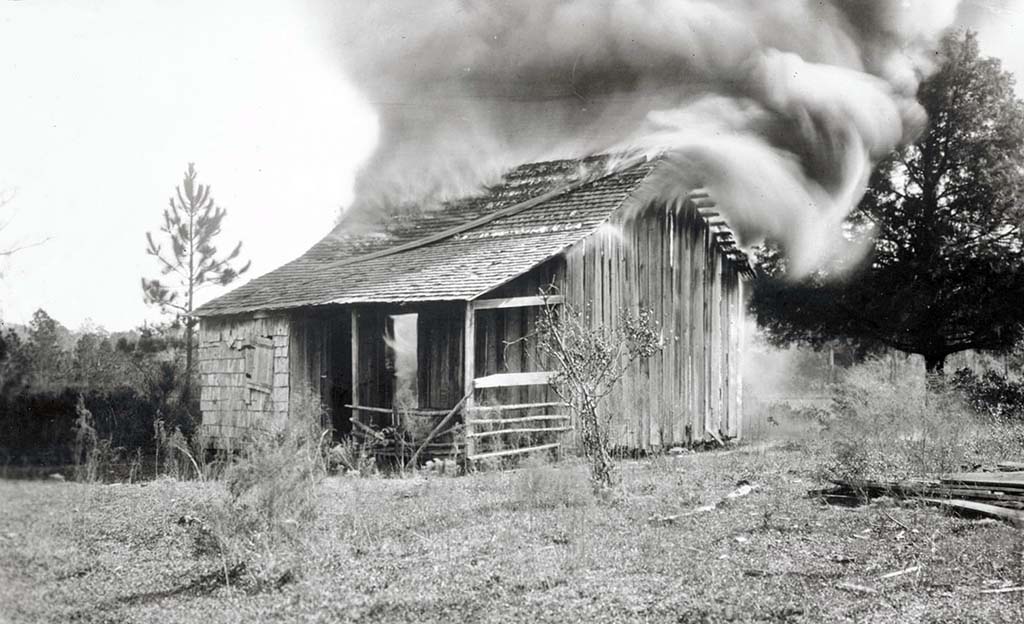On January 1, 1923, a massacre was carried out in the small, predominantly black town of Rosewood in central Florida. The massacre was instigated by the rumor that a white woman, Fanny Taylor, had been sexually assaulted by a black man in her home in a nearby community. A group of white men, believing this rapist to be a recently escaped convict named Jesse Hunter who was hiding in Rosewood, assembled to capture this man.
Prior to this event, a series of incidents had stirred racial tensions within Rosewood. In the winter of 1922, a white school teacher from Perry had been murdered, and on New Years Eve in 1922 ,there was a Ku Klux Klan rally held in Gainesville, located not far away from Rosewood.
In response to the allegation by Taylor, white men began to search for Jesse Hunter along with Aaron Carrier and Sam Carter, who were believed to be accomplices. Carrier was captured and incarcerated while Carter was lynched. The white mob suspected Aaron Carrier’s cousin Sylvester, a Rosewood resident, of harboring Jesse Hunter.
On January 4, 1923, a group of twenty-to-thirty white men approached the Carrier home and shot the family dog. When Sylvester’s mother Sarah came to the porch to confront the mob, they shot and killed her. Sylvester defended his home, killing two men and wounding four in the ensuing battle before he too was killed. The remaining survivors fled to the swamps for refuge where many of the African American residents of Rosewood had already retreated, hoping to avoid the rising conflict and increasing racial tension.
The next day the white mob burned the Carrier home before joining with a group of 200 men from surrounding towns who had heard erroneously that a black man had killed two white men. As night descended the mob attacked the town, slaughtering animals and burning buildings. An official report claims six blacks and two whites were killed. Other accounts suggest a larger total. At the end of the carnage, only two buildings remained standing, a house and the town general store.
Many of the black residents of Rosewood who fled into the swamps were evacuated on January 6 by two local train conductors, John and William Bryce. Many others were hidden by John Wright, the owner of the general store. Other black residents of Rosewood fled to Gainesville and to northern cities. As a consequence of the massacre, Rosewood became deserted.
The initial report of the Rosewood incident, presented less than a month after the massacre, claimed there was insufficient evidence for prosecution. Thus, no one was charged with any of the Rosewood murders. In 1994, however, as the result of new evidence and renewed interest in the event, the Florida Legislature passed the Rosewood Bill which entitled the nine survivors to $150,000 dollars each in compensation.

